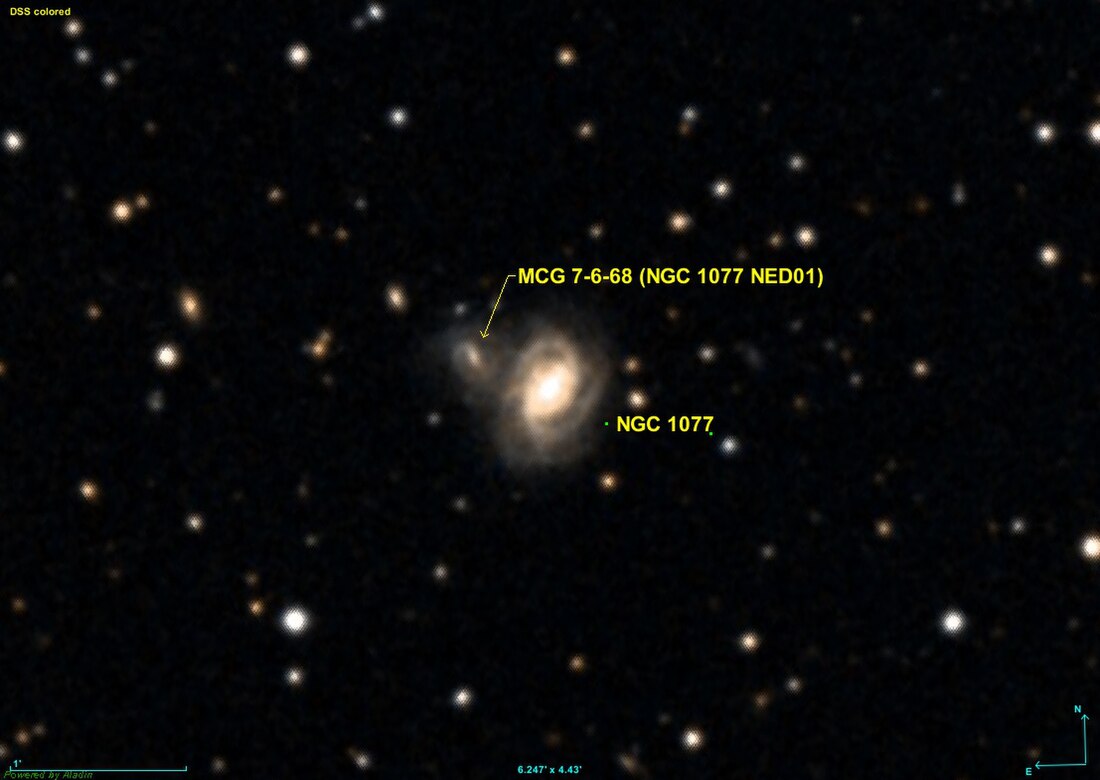NGC 1077
Galaxy in the constellation Perseus From Wikipedia, the free encyclopedia
NGC 1077 is a spiral galaxy in the constellation Perseus. It was discovered on 16 August 1886 by Lewis A. Swift.[5] It was described as "very faint, pretty large, extended" by John Louis Emil Dreyer, the compiler of the New General Catalogue.[5]
| NGC 1077 | |
|---|---|
 DSS image of NGC 1077 (right) and NGC 1077B (left) | |
| Observation data (J2000 epoch) | |
| Constellation | Perseus |
| Right ascension | 02h 46m 00.570s[1] |
| Declination | +40° 05′ 24.82″[1] |
| Redshift | 0.029900[2] |
| Heliocentric radial velocity | 8964 km/s[2] |
| Distance | 395.4 Mly (121.23 Mpc)[3] |
| Apparent magnitude (B) | 14.6[4] |
| Characteristics | |
| Type | Sb[4] |
| Apparent size (V) | 0.973′ × 0.740′[1] |
| Other designations | |
| UGC 2230, MGC+07-06-069, PGC 10468[4] | |
NGC 1077 is a galaxy pair with another galaxy appearing close to it. This galaxy, NGC 1077B, has a recessional velocity of 8529 km/s.[6] This is similar to NGC 1077's recessional velocity of 8964 km/s, so they are assumed to be physically related.[5]
References
Wikiwand - on
Seamless Wikipedia browsing. On steroids.
